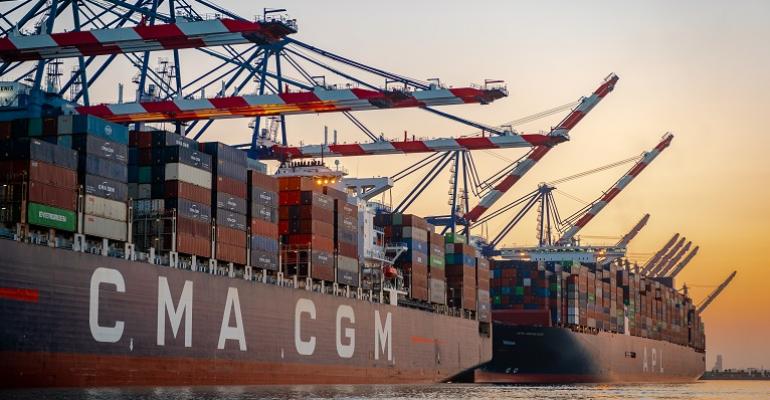Speaking at a webinar hosted by Container xChange on the subject Demurrage and Detention trends in 2022—and how to navigate them, analysts shared their container market outlooks and predictions for demurrage and detention costs going forwards.
“We've started to see shippers really struggle with these increasing fees for containers that have been stuck in port and returned late, a situation that for many shippers is really beyond their control,” said George Griffiths - Editor, Global Container Freight, S&P Global Commodity Insights.
“Many, many carriers and operators have introduced strict free time parameters, and as a result these charges for delays have been levied against the shippers. They've become a really significant cost centre for shippers. Previously, this was a transient cost, people didn't really look at it. People didn't really pay that much attention to demurrage and detention.”
The issue has become thorny as free days limits were cut and detention and demurrage costs rocketed to around $100 per day in the wake of the pandemic, said Griffiths.
“2021 saw a major major spike in these charges,” said Candice Buckle, Content Marketing Manager, Container xChange, sharing data from the company’s annual Demurrage and Detention benchmark report.
“In fact, the global average increase was 39% for standard containers alone… the charges for 20 distribution centres alone doubled in 2021. If we look at what the state is today in 2022, you'll see that in a lot of areas the trend in 2022 is decreasing slightly. For some outlier ports, like Long Beach and Los Angeles and Shanghai, they actually increased so that that ended up with the value in 2022 still being higher than pre-pandemic value by 12%. So even today, the spike is still pretty pretty much there,” said Buckle.
Chantal McRoberts, Head of Advisory, Drewry Supply Chain Advisors explained the root of rising detention and demurrage charges.
“It's disruption, disruption, disruption, driving an increase in detention and demurrage charges. If there’s a shortage of drivers, a shortage of physical people and vehicles to get the containers into the ports and out of the ports, it consequently increases the DND charges,” said McRoberts.
“I spend most of my time these days providing therapy to shippers, whether it be freight rates or detention and demurrage. Everybody is focusing on these cost items and unfortunately, if you're a shipper right now, your CFO is looking at all the bills and invoices coming in and asking ‘why am I paying for this?’”
Looking ahead, the panel did not have much good news for shippers hoping for respite in the medium term.
“These are heavily congested ports and terminals, and they have been for a very long time. We're tracking this to AIS data at Drewry and everything is still in the red. Nothing is moving into the amber and if it is, it's at the upper end of the amber still about to tip into the red side. We're seeing that still continuing at the large US ports,” said McRoberts.
While forecasting a softening in total detention and demurrage costs, McRoberts warned that if US port congestion continues and spills into secondary ports, costs will rise. The scenario is very location specific, she said.
On the freight rate side, both Griffiths and McRoberts forecast spot rates continuing to fall, but not to anything like pre-pandemic levels.
Asked how he expects the peak season to play out this year, Griffiths' answer was straight forward. “I would just say - what peak season? We always say that rates go up quite a lot in this time of year but they're just not at the moment,” he said.
Even with a slight easing in demand and vessels on voided sailings being used to clear up issues, the task of unravelling the disruption is massive.
“I firmly believe if nobody wants to ship anything on a container in the next six months, we still wouldn't fix the issues that we've got in the market at this point. The market is really snarled up, and it's gonna take a lot of effort to fix it,” said Griffiths.
Moderator Christian Roeloffs, Co-founder and CEO, Container xChange, added: "We've always compared it to a traffic jam. If there's an accident and a traffic jam forms, even if the accident is cleared up it still takes a very, very long time for traffic to actually flow again... it's not the case that you just resolve the blockage and then everything flows."
McRoberts agreed that peak season was not going to be usual this year, “because of the massive inventory levels that have been building up. I think if you speak to a lot of shippers right now, they've got a lot in their warehouse that they need to move and demand is falling. So they're feeling a little reticent about all of that,” she said.
Container xChange’s Demurrage & Detention: Annual Benchmark 2022 is available to download from the company website.
Copyright © 2024. All rights reserved. Seatrade, a trading name of Informa Markets (UK) Limited.
Add Seatrade Maritime News to your Google News feed.  |

